With a music technology market literally flooded with hundreds of monitor speakers it can be very confusing trying to understand what a good mixing loudspeaker actually is. There is a degree of personal taste involved in choosing a suitable loudspeaker but as a rule the technical requirements are fairly well designated.
Neutral frequency response
Commonly, mix monitors use a fairly small speaker box with 2 drivers, a tweeter to reproduce the high frequencies and upper mid range and a woofer to produce the lower mid range and bass frequencies. Monitoring is always an interdependent relationship between a loudspeaker and the acoustic response of the room in which it is placed. If we assume good acoustics the loudspeaker itself would ideally have a linear frequency response throughout the audible audio spectrum. A flat response reproduces all frequencies with the same intensity and therefore allows the instruments (and their tone) in a mix to be balanced well with respect to each other.
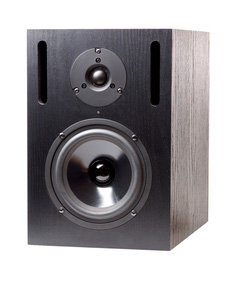 As an aside, it is worth mentioning that the monitoring volume will also influence the ‘flatness’ of the speaker system and room to the human ear. The Fletcher Munson curves relate to the ears physiological response which changes depending on the level at which audio is monitored. It is definitely worth researching the Fletcher Munson curves online.
As an aside, it is worth mentioning that the monitoring volume will also influence the ‘flatness’ of the speaker system and room to the human ear. The Fletcher Munson curves relate to the ears physiological response which changes depending on the level at which audio is monitored. It is definitely worth researching the Fletcher Munson curves online.
Power handling
A good loudspeaker for mixing should be able to reproduce a modern mix at a level of 85dB SPL without distortion, this is a level which most mix engineers will know about and listen at for at least part of the mixing session. (It relates to the Fletcher Munson equal loudness contour curves as mentioned above) The power handling capability of the monitoring system is a combination of the speaker and amplification.
The amplifier is an important part of the monitoring system and any amplifier should be able to output approximately double the power handling capability of the speaker itself. The reason being is that if a power amplifier distorts it will send high frequency harmonics (often ultrasonic) to the tweeter which results in heat and not sound. This is a very common cause of blown tweeter drivers in loudspeakers. So it is important that the power amplifier can produce a clean and undistorted full bandwidth audio signal.
Time domain response
When a speaker is set into motion by an electrical signal there are factors within the design of the speaker that can cause it to continue to move after the initial audio signal has ended. 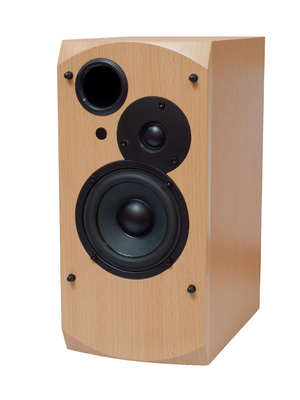 This is a common trait of reflex loaded speakers (speakers that have a hole/port at the front or rear of the speaker box). Closed box designs often have better control of the drivers in the box because there is higher internal damping and control due to the pressure inside the sealed cabinet.
This is a common trait of reflex loaded speakers (speakers that have a hole/port at the front or rear of the speaker box). Closed box designs often have better control of the drivers in the box because there is higher internal damping and control due to the pressure inside the sealed cabinet.
Good control of the driver is important as a speaker moving without a signal is obviously a distortion of the original signal. This can make the speaker influence the equalization and or dynamic range control (i.e. compression/gating etc.) that an engineer might apply during the course of mixing. A trade off that a sealed box exhibits is that the low deep frequency response will be poorer (it will extend less deeply) and some users may feel the bass is lacking for their taste. If possible try and listen to a speaker with a closed box, an example being the Acoustic Energy AE22 monitor.
Monitor size
The vast majority of near field speakers worth buying have a 6.5 inch woofer/mid range unit and a 1 inch dome tweeter. I would personally try and avoid smaller models unless your room is very small and you are short of space. The smaller the low frequency driver the less bass output and it is, of course, important to have good bass reproduction. Very large speakers are also available and known as a mid field speakers. These are great if you have a decent sized room and the budget to pay for them as they tend to jump significantly in price. I also recommend either a set of home made or ready built sturdy speaker stands. These will give you the best return of the money you have spent on the speakers as they will reduce resonance and stabilize the speaker in use. A rattling tabletop or bookshelf somewhat defeats the object of a high quality monitoring loudspeaker so it is a good investment when funds become available.
High quality monitors are rarely the cheapest models available. Good quality drivers and professional research and design, costs a considerable amount of time and money for a loudspeaker manufacturer and that is reflected in the retail price. I recommend opting for loudspeakers that reproduce quality sound over saving money. The results from your speakers will be reflected in everything you record and mix and it is an oversight to save money at the detriment to your sonic results.
Single driver speakers
Once you have your monitors you could think about a supplementary monitoring system such as those with a single driver. These allow you to focus very well on the all important mid range. The mid range in a mix is often difficult to judge well on a 2 way monitor and these type of speakers can very much assist in balancing the many mid range instruments and voices in a mix. They should help with cutting mid range mud and enhance presence as well as helping with mix level balances. If it is at all possible you could buy or make a single driver loudspeaker which will definitely help check mono compatibility and get mid range balances right. An example of such a speaker is the Avantone mix cube.
Active or passive monitors?
Passive monitors require a stereo amplifier to drive them, this is connected with a length of twin core insulated copper wire. As a rule, the thicker the wire the better. One advantage of this system is that if the amplifier breaks you can simply install another and keep working.
A passive monitor means it contains a passive crossover. A crossover is a set of passive electronic components (capacitors and inductors/coils) which act as a filter and split the highs and lows at a frequency in the mid range. As an example, the tweeter receives the higher frequencies above 3.5kHz and everything below goes to the woofer driver.
Active monitors have an amplifier built in the monitor box itself, this has a few advantages. It means the amplifier is very closely coupled to the drivers and can potentially provide better control over the speaker movement, meaning accurate reproduction. It also means that the filter for the crossover can contain active circuitry which means the filter can often be more accurately matched to the optimal frequency response characteristics of the drivers than a passive crossover.
So which is best? Well both have good and bad points, what really matters is the quality of the specific design. Either can out perform the other and it is not possible to say active monitors are better than passive or vice versa. Actives do have the potential to be better but they must have the right amount of research and development, time and skill put in to their design to have the advantage.
Summary
Make a short list of speakers you want to check out and go and have a listen to them in a music technology store. If you ask on a production forum and wait long enough, every monitor ever made will be listed which is not much help. Take some material you know well and listen to the sound. Consider the above points and what you like from a taste perspective and you will end up with a professional tool which will serve your music well for many years to come.


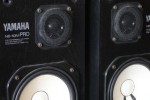
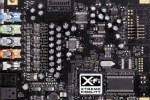
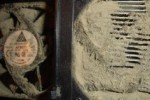
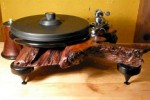
Firstly I love your article.
Though as a speaker lover ( as a hobby i build them, built about thirty, with the modifications probably about 100) I believe your statements about a passive crossover not being able to accurately blend the drivers (mainly in a monitoring situation)to not be true. I have gotten one of my speakers with much trial and error, though considerably less than a professional speaker designer, to less than +or- 1.1db through 40hz-16khz.